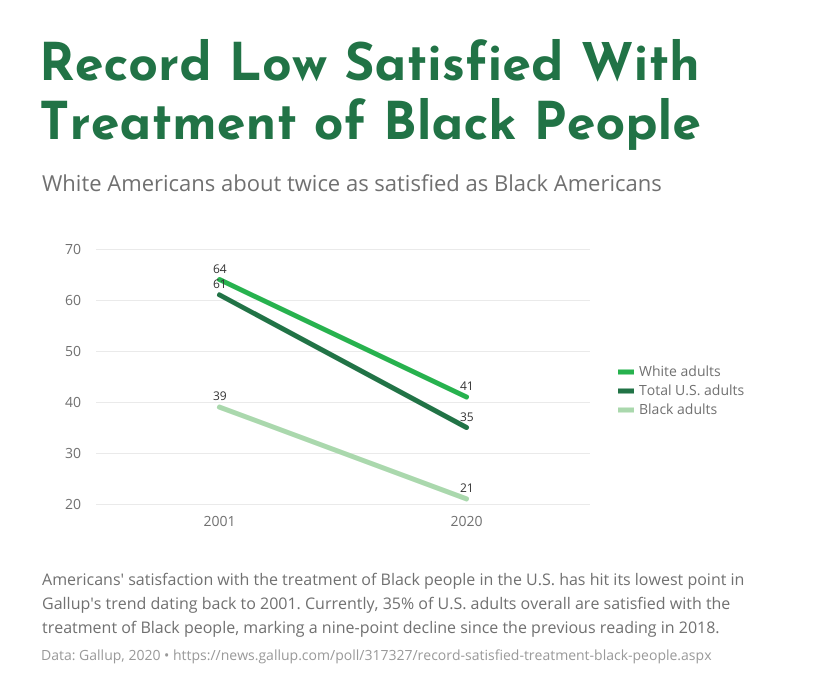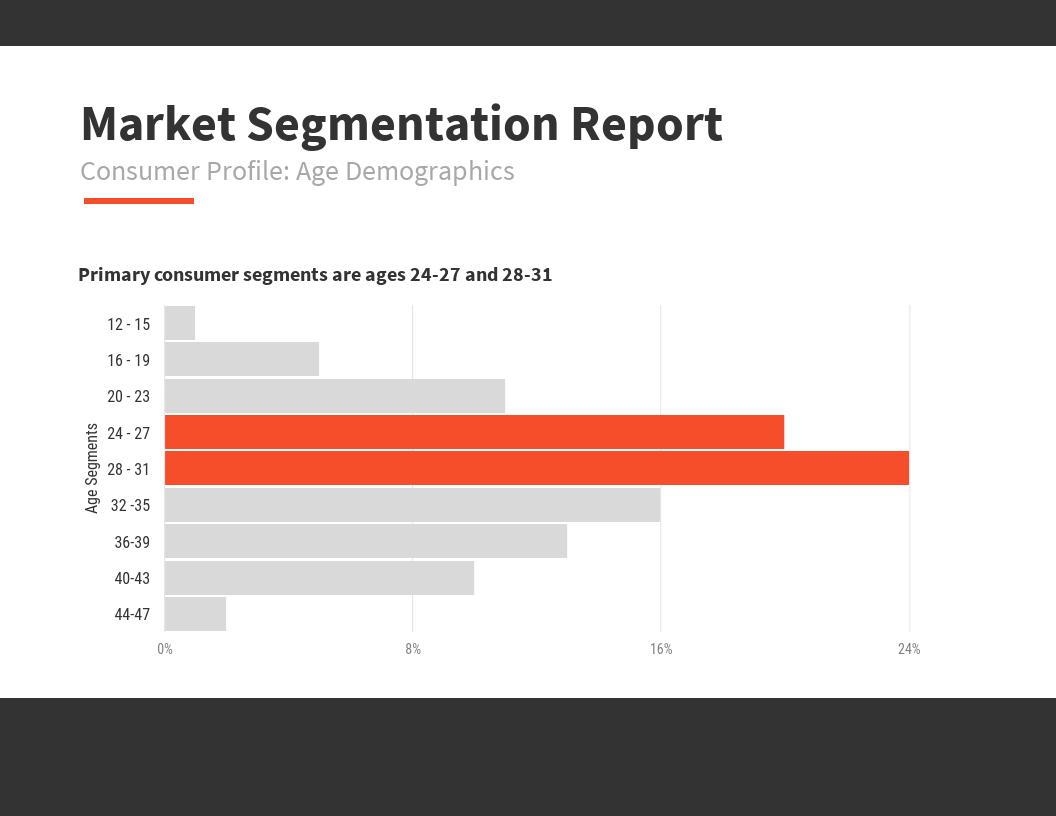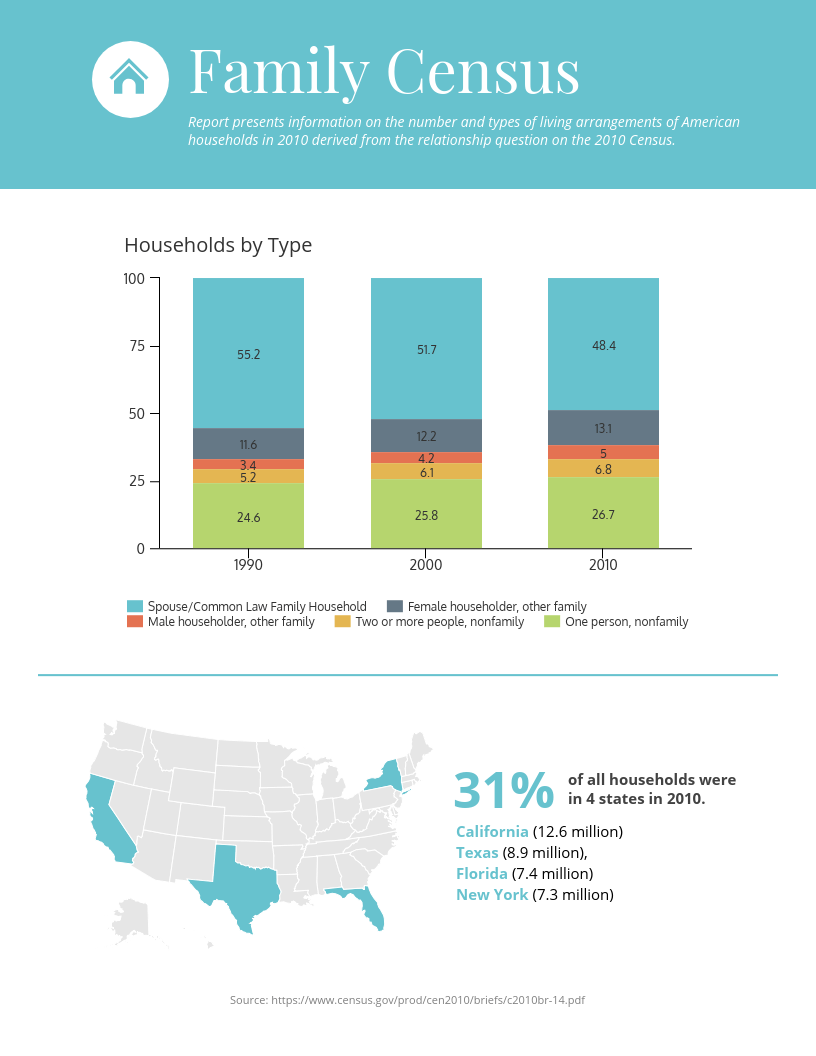A bar chart is a useful and ubiquitous data visualization tool that graphs data using rectangular bars. Bar charts can be plotted horizontally or vertically, they can be stacked or clustered, and they’re perfect for showing data across categories.
Learn about the best ways to use a bar chart and get some inspiration for your visual communication projects. Venngage’s Chart Maker simplifies the process for creating bar charts so you can focus on telling your business’s story.
Click to jump ahead:
- What is a bar chart?
- When should you use a bar chart?
- When should you not use a bar chart?
- Is a bar chart the same as a histogram?
- How do you create a bar chart with Venngage?
- Bar chart examples
What is a bar chart?
A bar chart, often called a bar graph, is a chart that uses rectangular bars to visualize data across categories. The categories represented could be anything from occupations to years, to countries (as in the above example), to demographic groups and more.
One reason why bar charts are so popular is that they are simple yet versatile. Bars can be aligned vertically, as in the above example, or horizontally, like in the infographic below.
When bars in a bar graph are arranged horizontally, this is sometimes referred to as a column graph or column chart because the bars resemble columns.
In both examples above, you see that one bar (or one column) represents one category. This is not always the case, as one category can be represented by two columns or more:
The template above illustrates a double bar chart (or in this case, a double column graph). It’s also referred to as a grouped bar chart.
This type of bar chart aligns two bars next to each other for each category, each bar represented a different data group. As you can see, it’s best to be used to compare different sets of data.
Another type of bar chart you can often see is stacked bar charts, also called segmented bar charts. Here’s an example of one:
One category is also represented by several bars, but instead of being placed next to each other, these are stacked on top of one another. Stacked bar charts like the one above can let you bring a new touch to what’s expected and save space in your design.
When should you use a bar chart?
Another reason bar charts are so popular is that they can be used to visualize many types of data. They can show change over time, they can illustrate which values have increased the most, and they can help you analyze how values compare to each other.
Bar charts are often the best alternative to other data visualization tools. For example, while pie charts are useful and have their place, it’s often difficult to see at a glance the difference between values. So, as in the example below, bar graphs can be used to show parts of a whole.
When should you NOT use a bar chart?
Bar charts are most useful when the data they illustrate contains major differences. Without clear distinctions between the categories or when there’s too much data used within one chart, it can be difficult to follow the exact story the data is telling.
This example represents a bar chart that has way too much data. Plus, aside from the first category (Pass to the next generation), there aren’t significant differences among the three data sets within the other categories.
This is better represented in a table so readers can quickly compare data across rows and columns. A bar graph can be used, in this case, to represent just the first category since the numbers are more significantly different in that one.
Bar charts can be used to show change in data over time, but that can be reflected using line chart as well, especially when there’s a drastic change between two time intervals:
Bar charts can also be prone to distortions, such as adjusting scales to make differences appear larger.
The example above shows just how misleading this technique is. Even when no shady techniques are used, bar charts that show major differences are the most effective.
Not sure where to begin with data? We can help demystify data collection and visualization.
Is a bar chart the same as a histogram?
Visually speaking, a histogram is a type of bar chart as it also uses rectangles to visualize data, and those rectangles can be arranged vertically or horizontally. But histograms are used for a different purpose.
Where histograms stand apart is that they are meant to show distributions of data rather than how categories of data compare to each other. The example below illustrates this difference.
In this case, rather than visualizing the differences between groups or categories, the reader is meant to see how data distribute across a continuous range, which is age segments. Another easy way to tell the difference is that histograms have no spaces between bars.
How do you create a bar chart with Venngage?

Creating a bar chart with Venngage is simple and intuitive, and the robust graph tools allow you to select from a variety of chart styles.
Add your data or import a Google sheet or Excel file to see how your data looks in different chart types. Add your brand colors, icons and other visuals to enhance the look of your bar chart.
Here are some examples of how you can use a Venngage bar chart in an infographic, a survey result report, and more:
Try a segmented bar graph to show how categories of data have changed over time. Limit your categories to just a handful so the information doesn’t become overwhelming to the reader.
Need to show both positive and negative values? Another example of a segmented (stacked) chart, this one uses stacked columns to show gains and losses.
Bar chart examples
Check out the range of bar charts you can create with Venngage that will help your team illustrate just about any type of data. Regardless of your industry, bar charts are a versatile tool to have in your visual arsenal.
Sales & finance bar charts
Infographics with financial data, such as sales, revenue or projections, are natural fits for bar graphs. Use them to spice up a presentation or a blog post, or put them in a pitch email to show potential investors.
This corporate bar graph shows a company’s projected growth over a five-year period. The simple color palette creates a sleek feel, and the separate charts have clearly marked scales to help readers understand the information.
This monochromatic bar chart infographic shows a company’s revenue by month over the course of a year, giving readers a chance to see the ups and downs.
One sales benefit of using a bar graph to illustrate month-by-month sales figures is obvious in the above example: most companies see sales peak during a particular season. In this case, it’s mid- to late summer, which shows how much time and energy the company needs to focus during that time of the year.
This double column graph shows projected profit and loss for a company over the course of several years. Company leaders can see at a glance where they may be falling short.
Use this minimalist competitor analysis bar graph to show where your company stands (or could stand) among your industry.
This stacked bar chart lets the reader see profit comparisons year over year for each month. The monochromatic color palette is perfect for the finance industry.
Advertising & marketing bar charts
If finance and sales generate the most important data in a company, then advertising and marketing are right behind them. From audience segmenting to campaign spend and everything in between, using bar graphs to visualize advertising and marketing data is a no-brainer.
This marketing infographic uses a bar chart to visualize the most common strategies startups use to establish their online reputation.
In this bar chart, we’ve visualized survey results from marketers on which types of content give them the hardest time. If you want to check out the full survey, read our post on the 15 Visual Content Marketing Statistics to Know for 2021.
Help your team members, leadership and potential investors understand where your marketing team spends its budget by customizing this simple bar chart with your marketing tactics.
This stacked bar chart puts a spin on pie charts by showing parts of a whole. In this case, it’s user segmentation, but it’s easy to see it applied to any other figures that total 100%.
Visualize complex data across a range of areas with this bar chart infographic that helps simplify several categories of statistics.
Editorial & pop culture bar charts
In addition to using bar charts for internal purposes, they’re a perfect addition to external publications, whether for content marketing purposes, blogs, articles or as standalone infographics.
While this bar chart compares box office results across genres, you can reuse this format for any pop culture or entertainment-related data you’ve collected.
Take a data-forward approach to a controversial topic, such as climate change, by sharing simple facts about it.
This infographic uses a stacked bar chart approach to visualize the relative production of various famous authors in modern times, including what genres they wrote in.
Bar charts and histograms can be really similar, which makes it easy to confuse them at first glance. If you’re unsure which one to use, check out our bar charts vs. histograms guide — it walks you through the key differences with clear visuals and examples.
In summary: Bar charts are simple to create and easy to read, and they’re right at home in any visual presentation
Whatever data you have, chances are a bar chart would be a good way to visualize it. While bar and column charts aren’t perfect for every type of information, they are among the most versatile data visualization tools, and creating them with Venngage’s Chart Maker is a snap.































































